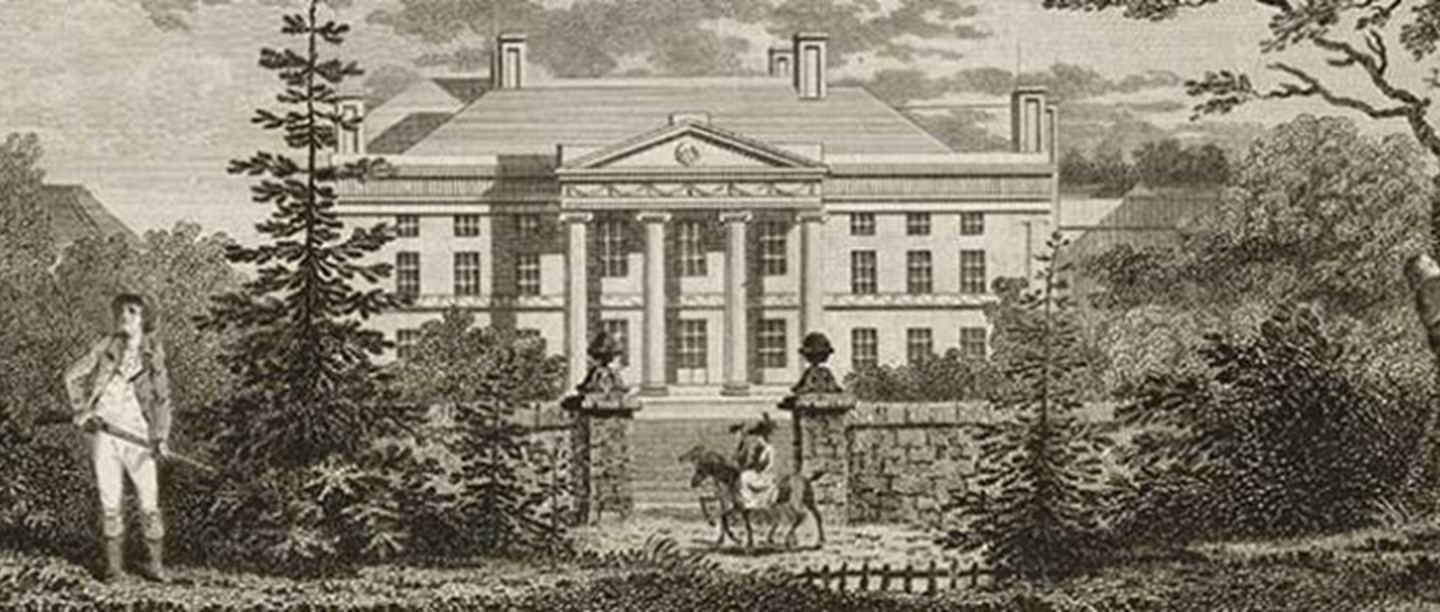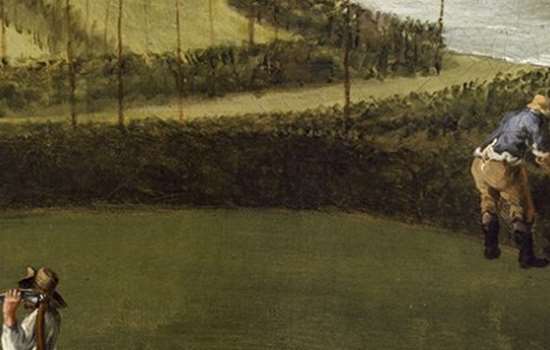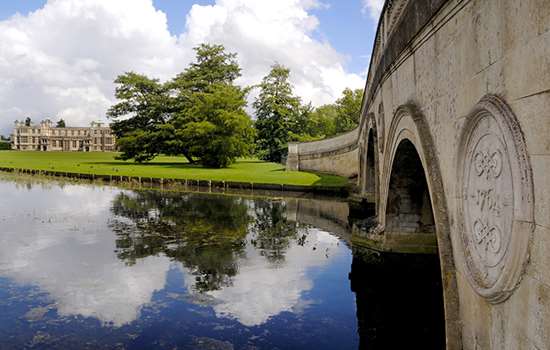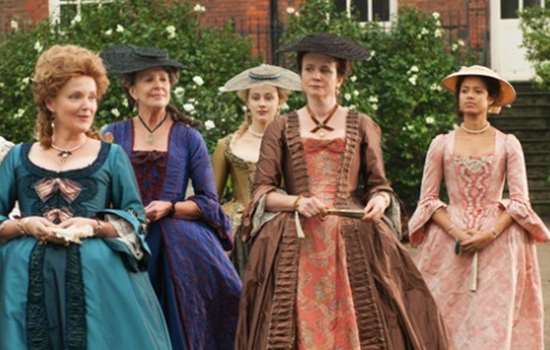
Humphry Repton is one of the England’s great landscape gardeners, creating around 400 designs and proposals in his working life. His style went on to inform garden design as Capability Brown had before him, and his work can still be enjoyed all over the country at places like Woburn Abbey in Bedfordshire and Tatton Park in Cheshire.
2018 marks 200 years since the death of Humphry Repton on the 24th March 1818. At Kenwood in London, Repton provided advice on significant changes to be made to the landscape, and here we explore the designs that were used – and those that were not…
Merchant, painter, landscape gardener
Humphry Repton may have gone on to be the last great landscape designer of the eighteenth century but he began his career as an unsuccessful textile merchant. It was not until 1788, aged 36, that he decided to set up business as a landscape gardener.
Repton initially set himself up as a follower of ‘Capability’ Brown, later adapting his approach to suit the changing fashions of the early 19th century. Unlike Brown he was a prolific writer, publishing several books on his landscape design theories. He felt that his unique selling point was his painterly eye, and would create sketches of idealised final products to sell to his clients. These were formalised in his ‘Red Books’, which used innovative flaps and slides to show before and after drawings as well as text on his proposed improvements.
Repton’s arrival at Kenwood
When Repton first visited Kenwood on 8 May 1793, it had recently been inherited by David Murray, 2nd Earl of Mansfield. The Earl had already seen Repton’s work in 1791 at Bulstrode Park, in Buckinghamshire, and had complimented this. However, he did get his name wrong, calling him ‘Ruffort’. After Repton’s visit, his first task was to create a Red Book to explain his ideas. He completed the first section in just 12 days, explaining that his haste was simply: ‘… because I was so much interested in the subject as to make every other give place to it until I had completed my general outline’.
The second section, covering the pleasure ground to the south of the house, followed in July the same year.
Repton’s design plan
Repton’s advice focused on moving the main road to the north of the house, intending to instead create a new sweeping approach to the house. As in many of Repton’s Red Books, his proposals included an appraisal of the ‘Character and Situation’ of Kenwood. He was critical of its close proximity to London, condemning it as a villa rather than a grand country estate, and consequently asked for: ‘leave to consider the subject not merely as a Villa, but as a superb and elegant Mansion’.
He proposed to solve this by extending the pleasure ground and adding a series of walks. He also suggested planting trees along the southern boundary to block the houses of Kentish Town from view and to create the illusion that the whole valley, stretching to London, was part of the Kenwood estate.
Repton’s other suggested changes included a new flower garden to the west of the house and new locations for the farm buildings, kitchen garden and stables. This ‘winter garden and parterre for flowers’ would form the view from new rooms that he had recommended in his proposed changes to the house. But Repton was not to get his way on everything…
Repton rejected
Like other landscape designers at the time, Repton also dabbled in architecture. Writing in 1794, he expounded that it is: ‘absolutely necessary for the landscape gardener to have a competent knowledge of architecture’.
Kenwood house itself had been remodelled by architect Robert Adam between 1764 and 1779, but Repton proposed to extend the building by adding two wings either side of the portico. He was later disappointed when the final design and implementation of these new wings was given to other architects and not him. The extent to which Repton’s proposals were the catalyst to the later design is unknown – although Repton wrote in September 1793 that the architect Robert Nasmith had followed many of his ‘hints’.
One of the most playful elements of the landscape at Kenwood today is the Sham Bridge. Originally built in 1781, it has been repaired and restored several times and remains a popular feature. Repton, however, recommended its removal, believing that the use of a façade was ‘beneath the dignity of Kenwood’. Instead he recommended a new bridge between two of the ponds to create the appearance of a one continuous lake. This suggestion was ignored.
On the whole, the changes that were ultimately adopted at Kenwood were those outlined in the first section of his Red Book. His further, perhaps unsolicited, proposals for south of the house appear to have been more readily ignored. We can perhaps glimpse Repton’s reaction to this in the fact that Kenwood was not mentioned at all in his memoir – despite it being a significant early commission for him.
This modern aerial view of the landscape today shows the lasting effect that Repton had on the landscape at
Kenwood. Imagery © 2018 Google, Map data © 2018 Google
Repton’s legacy
The final design may not have reflected exactly what was laid out in the Red Book, but the substantial changes that followed were directly influenced by his proposals and theories. His commission undoubtedly provided the catalyst for the changes to the landscape at Kenwood in the late 18th century.
When visiting Kenwood today, Repton’s changes can clearly be seen in the design of the sweeping approach drives, the location of the kitchen garden and stables, the flower garden to the west of the house and the large expanse of lawn in the pleasure grounds. Repton’s ideas weren’t embraced in every detail by the 2nd Earl of Mansfield, but there is no question that his input, and his emerging style of landscape design, permanently influenced the layout that we enjoy at Kenwood today.
Visit Kenwood
Spot Repton’s garden features on a visit to the gorgeous grounds of Kenwood House on Hampstead Heath, or visit another Humphry Repton landscape at Bayham Old Abbey, near Tunbridge Wells in Kent.
You can also find out more about the Humphry Repton bicentenary celebrations through the Gardens Trust.


